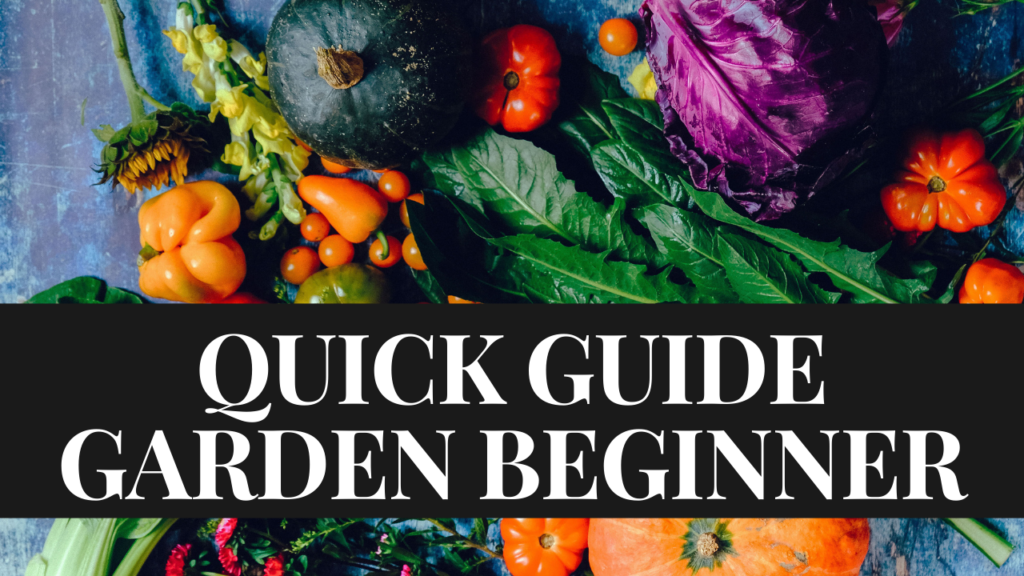A Gardening for Beginners Guide.
Many have dreamt of having a beautiful, green, and lush garden. However, reality tends to impose itself in the form of lack of time and lack of resources and ruining such a beautiful dream. Using the following ideas, you will learn how to start a garden for beginners.
In this video, we are going to talk about some excellent gardening tips and tricks for beginners for the success of a garden.
1. What do you want to do with your garden? A place for children to play? A sea of flowers? Grow your own food?
It is challenging to combine all these wishes and desires. Therefore, it is advisable to set certain limits, at least at the beginning. Creating your dream garden will take time. Before starting work, consider the different functions that the garden should fulfill if it should include, for example, places to sit, to play, or flower beds.
2. Think where you will place it.
It is essential to decide in advance where your plant will reside to select the most suitable spot. Although it is small now, it will grow, it can become very tall or wide and need more space than you thought. Always ask what its growth pattern is before buying it. We cannot put a tiny plant in a vast area because it will go unnoticed and will not create the desired effect.
3. Write it all down.
Take a diary and write down everything you consider necessary and keep track of the activity in your garden.
4. How far can you go by yourself?
The key is to achieve a balance between available time, knowledge, and financial possibilities. For many gardeners, much of the charm lies precisely in doing all the work on your own. Others hire professionals: garden designers or landscapers.
5. Which plants to choose from?
As much as you like orchids or bonsai, it is best to start with easy-to-care plants that will survive your carelessness and clumsiness as a beginner gardener.
6. What are the climatic conditions in the area where you live?
There might be different plant hardiness zones in the same country. For this reason, a good measure is to consult a garden center or municipal nursery. These places usually offer all the necessary data about the area’s vegetation, climate, and soil. Buying plants blindly, is usually expensive.
7. Set a schedule.
In spring, start to fertilize all the plants and do this every month and a half or two during the plants’ growing season, which generally ends in autumn. In the fall, after the intense heat has passed, prune the trees and shrubs, and if you want a bulbous plant to grow next year, do it at this time or in the spring. In winter, prune woody plants and roses before the first frost.
8. Height, time, and color.
When you plant a flower bed, you have to consider three very simple things: height, time, and color. Make sure, first, to select species whose flowering periods overlap to extend the season. It is also advisable to combine colors with complementary shades. Lastly, make sure the taller plants don’t deprive the shorter ones of light.
9. Quality pays off.
It is not hard to find economical equipment and flowers on sale in any supermarket. It is true, as is also the case, that no plants will flourish in poor quality soil. The tools should last more than one season. To do this, buy good quality tools and materials. It is always good to purchase fewer things even if they are more expensive since they will last much longer.
10. Share with friends and neighbors.
Not every person in the locality needs to have their own lawnmower or hoe. Borrow it from a neighbor or reach an agreement between several people to share the expenses derived from acquiring good quality products. You can also trade plants and bulbs with friends and neighbors, share tips and strategies and help each other when lifting heavy objects. Just don’t forget to invite them to a garden party as a thank you.
11. Continue with maintenance.
You may not have to do it every day, but proper maintenance is the best thing you can do for your garden and certainly the most rewarding. Spend your time removing weeds and pruning your plants.
12. Water carefully.
Water consistently, that is, regularly and enough to keep the compost moist but not soggy.
13. Useful tools for a novice gardener.
- A shovel for digging
- A rake
- A lawnmower
- Some garden shears
- A branch cutter
- An irrigation hose and sprinklers
14. Be patient.
Gardening is a process. It is not something that happens in a single day, and it takes time. Impatience could make you water too much and kill your plants, instead keep an eye on them, and let them be unless you notice something wrong.
Keeping your plants healthy, with abundant flowers if that is the case, and seeing them grow lustrous in the space you have chosen for them generates great personal satisfaction. When you manage to divide them without problems and reproduce new plants, you will have already gone up from the basic level to the advanced level. And on that step, more demanding plants await you that require more pampering, but that will make you fall in love.
We strongly suggest you get a book to serve as a reference in your gardening journey.
The books we recommend are linked in the description under this video.
Backyard Gardening Book (paperback)
Backyard Gardening Book (audiobook)

